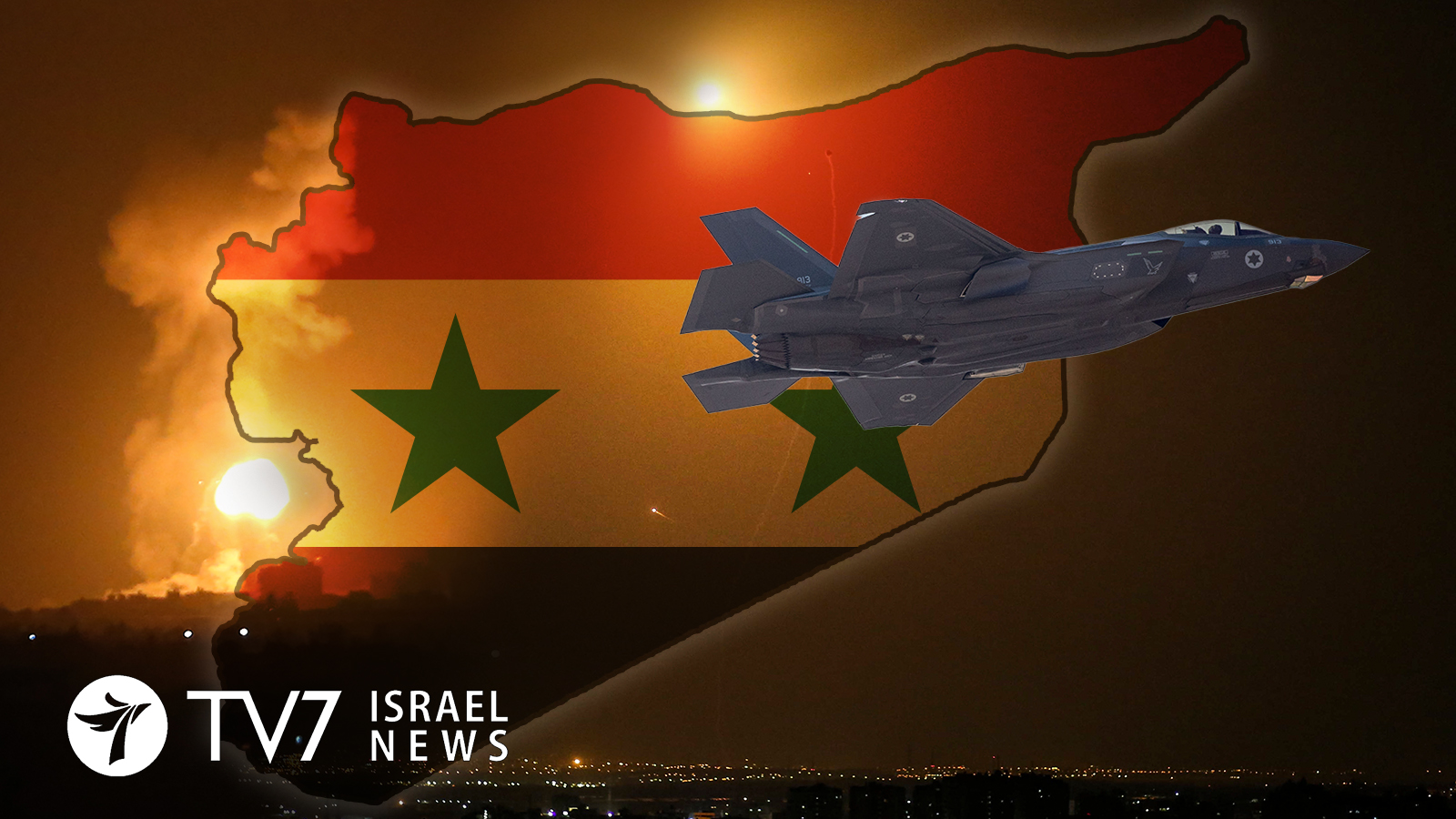The Israeli Air Force conducted a retaliatory bombardment in Syria overnight, targeting a number installations belonging to the Syrian Army and Iranian-proxy militias – including the Islamic Revolutionary Guards Corps (IRGC) elite Quds Force.
Multiple military targets were struck simultaneously just after 3 AM this morning. According to IDF Spokesman Lt. Col. Jonathan Conricus, 8 targets in areas stretching from the Syrian-controlled side of the Golan Heights to the Damascus periphery were attacked. They included an Iranian headquarters at Damascus international Airport, a “secret military site” that served as a “hosting facility for senior Iranian delegations when they come to Syria to operate” and the 7th Division of the Syrian Armed Forces (SAF),” he said. Other areas included “storage facilities, headquarters and military compounds” near the town of Sayyidah Zaynab and Al Kiswah city, as well as rural areas south of Damascus and the border region of the Al-Quneitra Governate.
The futile SAF attempt to thwart the Israeli strike with the deployment of aerial defense measures only served to draw direct firing by Israeli warplanes at the regime’s advanced surface-to-air missile batteries and other relevant installations, described as “causing significant material damage.”
According to the London-based Syrian observatory for Human Rights “3 Syrian officers and members of the air-defense forces, 5 militiamen of ‘al-Quds Corps’ believed to be of Iranian nationality and 2 other militiamen who are suspected to be either Lebanese or Iraqis” were killed in the Israeli bombardment. It further noted that “The death toll is expected to rise further as the attack left several persons injured, some in serious condition.”
The strikes came just one day after the IDF discovered improvised explosive devices (IEDs) planted near the Israeli security barrier of the so-called ‘Alpha Line’ on the southern part of the Golan Heights. All of the IEDs were safely defused by Israeli troops, without incident or injury.
The IDF Spokesperson’s Unit informed TV7 that the bombs were located near an area where a similar attack was prevented about 3 months ago.
Specifying that 3 claymore anti-personnel charges were discovered on Tuesday near an Israeli military position in the Golan Heights, Lt. Col. Conricus said, “The actual planting of the IEDs was done by Syrian locals but the guidance, instruction and control was by the Iranian Quds Force – that is why we decided to retaliate against them in Syria.”
That message was later underscored in an Israeli Defense Ministry communique sent to TV7 today, in which Alternate Premier and Defense Minister Benny Gantz said that “the IDF initiated an air strike against Iranian Quds Force and Syrian military targets in response to the explosives laid on Israeli territory along the border with Syria.”
Several hours after defusal of the IEDs, Gantz conducted a tour of Israel’s northern border with Lebanon – during which he visited the IDF Northern Command for a security briefing and a situation assessment by Israel’s top military brass.
“We have been prepared for some time now for the possibility of attacks along the northern front. I am confident in the IDF’s capacity and our determination to respond severely to any incident that occurs, whether out of the Lebanese front or the Syrian front,” stressed Defense Minister Gantz, reiterating, “I, once again, remind our enemies: Israel will not tolerate any violation of its sovereignty on any front. The Syrian regime is accountable for what happens on its territory or out of its territory, such as the planting of these explosives, or on its territory, i.e. arms smuggling to Hezbollah. This cannot continue and we are not going to ignore it.”
Michael Biton, Israeli Minister in the Ministry of Defense added, “We are here in the north, observing and studying our enemies, the terror army of Hezbollah. This demands of us to prepare the civilians appropriately to any emergency scenario. About half a year ago, the Defense Minister and I visited the regional council heads, the Chairpersons of communities along the frontier. They presented us with civilian’ security challenges, the main one includes defensive fortifications to homes that are located within the first Kilometer of the front, a project that was stalled for three years in the government, we accumulated 100 million (€25m+ / $29.8m+) and we will accumulate additional hundreds of millions to fortify private homes and shared (civilian) houses across the north. A second action includes manning all of the first response (civilian paramilitary) units throughout the northern sector. The third action includes erecting resilience centers.”
Jerusalem has repeatedly attacked Iranian targets in Syria along with many of its proxies, including Lebanon’s Hezbollah terror organization, as part of a declared campaign to prevent the Islamic Republic from entrenchment just over Israel’s northern frontier.
Lt. Col. Conricus commented that the latest attack was “not one of the largest, but it is diverse.”
Syrian President Bashar al-Assad’s government has never publicly acknowledged that there are Iranian forces operating on his behalf against opposition forces fighting in the Arab Republic’s civil war.
Western intelligence sources have commented that Israel’s escalation of airstrikes on Syria in 2020 are part of a larger “shadow war” greenlighted by the Netanyahu and Trump Administrations to curtail Iranian military advancement.
